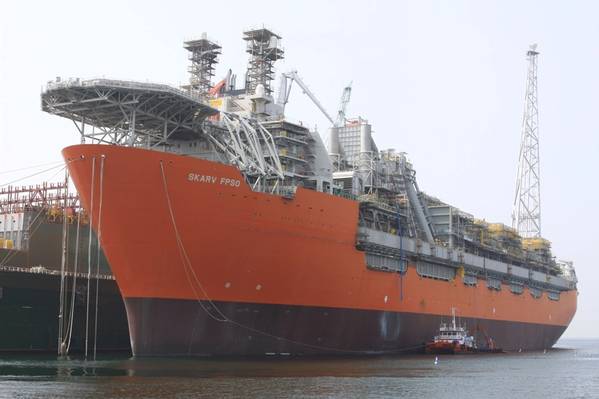
Orders for floating production vessels, their variants and, by default, a lot of “EPCI” are expected to be higher over the next four years than believed at the end of 2018, says an analysis of business drivers done in November by numbers cruncher, World Energy Reports.
With over 200 planning-stage projects contemplating a floating production system of some type, there’s much at stake for the supply chain. In their 95-page report, Floating Production Systems, WER authors suggest at least 50 floating production storage and offloading vessels, or FPSOs, and six FLNG vessels will be ordered through to 2024.
The change seen now over 2018 lies in “a major reduction in expected (orders of floating storage and regasification vessels, or FSRUs),” as several vessels already exist for new terminals. The report’s authors have upped the number of orders for 2020-2040 in their forecast based on market drivers that support growing investment activity in the floating production sector.
“We have outlined three scenarios that capture a realistic range of possible market conditions over the next five years,” report author, Paul Morris, told OED.
Morris and his colleagues’ segmented look at orders and drivers also details contract flows across the five major production system types: FPSOs, FLNG, FPUs, FSRUs and FSOs. They also assess 10 market drivers in particular “that will determine the pace of orders for production floaters over the next five years”.
“We examine future oil-gas demand growth; deepwater’s role in the future energy supply mix; the risk of future oil/gas supply disruption; future oil and gas prices; (CAPEX) budgets of deepwater field operators; the competitiveness of deepwater (versus) shale/tight rock development for upstream CAPEX resources; access to capital for deepwater projects; the impact of EPC/leasing contractors' capacity constraints on the pace of future FPSO orders and the impact of opening Brazilian deepwater resources to foreign investment and possible Petrobras privatization,” a statement by Morris says.
With U.S. LNG exports having doubled; with political forces buffeting Russian gas and the on-again off-again nature of supply from Africa and Australia, regional gas pricing is now at play. Meanwhile, investment in oil continues apace, especially arctic and shale oil, joined by production from new provinces.
The report navigates these waters and describes the growing understanding that tight oil increasingly entails a higher “breakeven” than deepwater.
The findings point to a future, where order counts for floating production are potentially helped by institutional awareness of shale’s cost realities.
Deepwater
Meanwhile, hull fabricators, conversion yards, topside plant suppliers, topside system integrators, engineering firms and other marine & offshore suppliers are still benefitting from annual, floating-production CAPEX of between USD15 and USD25 billion.
Those winnings, however, are attained amid a more challenging offshore market. Although orders are on the uptick, politics and policy can conspire to create surprises, and, the report says, operators are increasingly in the driver’s seat.
“Excess capacity in the supply chain has created a buyers’ market, shifting negotiating leverage to the field operator,” the report says. That situation is eased for both by the still-low cost of borrowing, with no end in sight for cheap loans. The report examines the market effects of this favourable epoch, as it details future floater requirements, their timing, current inventories, new-builds and plans for all segments.